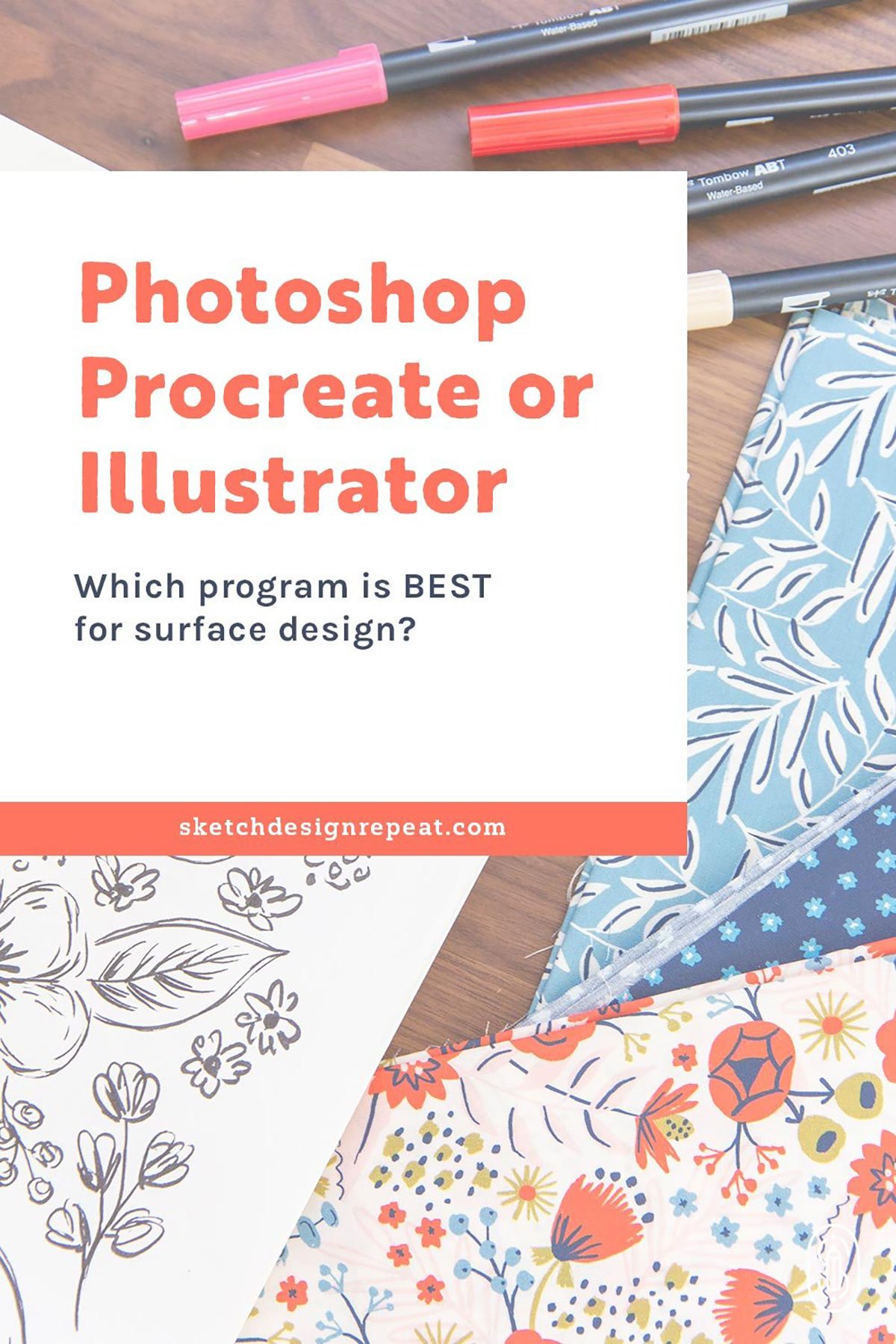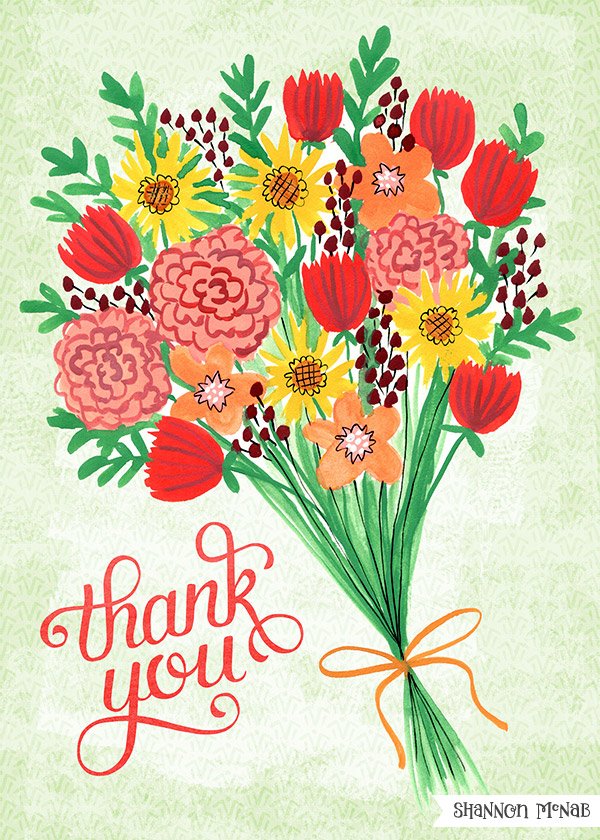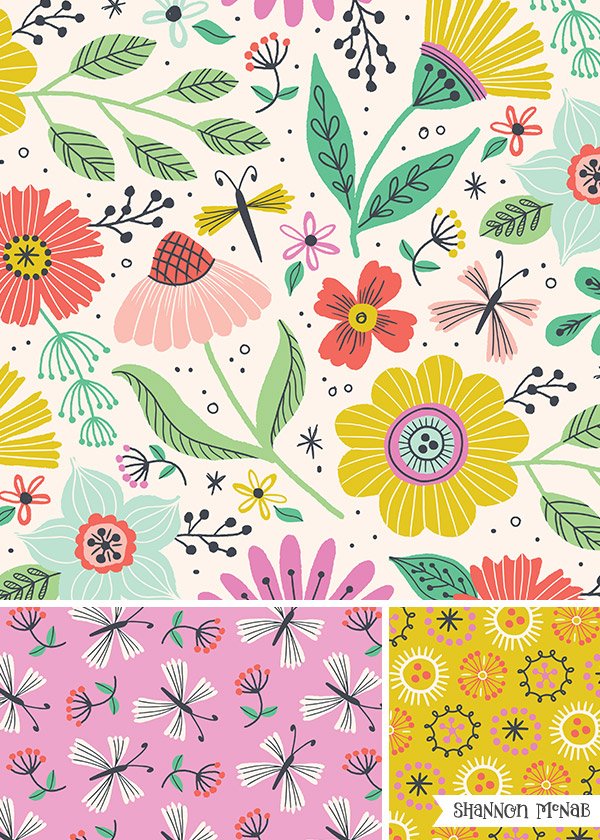Raster vs vector? Photoshop vs illustrator? Photoshop vs Procreate? What’s the difference between all of them? Is one better suited for surface design than the others?
Maybe you’ve struggled to learn one or both programs because you were told you had to. Or maybe you were told the myth that you have to use Adobe Illustrator to be a successful surface designer – I dedicated a whole video on Instagram about why that isn’t true, btw.
Whether you’re brand new to surface design or not, these are things you may have struggled with at some point. But is any of it even true – is one truly better than the other? What even IS raster and vector art??? And why does it matter?
Well, I hope today’s post will bring some clarity to that age-old dilemma.

Let’s start with a few definitions…
What’s the difference between raster vs vector?
Raster art is pixel-based where an image is made up of an arrangement of pixels or dots. If you scale up a raster image large enough, it will become “pixelated” and lose quality.
That’s why it’s so important to create high-resolution art at a minimum of 300 dpi. Adobe Photoshop is the most commonly used raster-based design program, but Procreate has gained significant popularity among surface designers over the last few years for its ease of use.
Vector art, on the other hand, is based on mathematical formulas – images are created using points and lines & curves in-between the points. Because of that, you can scale vector graphics to any size without seeing any pixelation or loss of quality. Adobe Illustrator is the gold standard of vector-based design programs, used by most companies. However, Affinity Designer is another vector program used by some surface designers.
So when comparing Photoshop vs Illustrator, is one superior to the other for surface design?
No, I firmly believe one program isn’t inherently better than the other as each has strengths and weaknesses. Instead, the more important question to ask is: Which program is better for YOU to design with?
Adobe Photoshop & Procreate
Both Photoshop and Procreate’s strength is the ability to display texture and fine details in a way that vector programs can’t replicate. It’s why those who prefer to design away from their computers love to use Procreate. Or why most surface designers who use watercolor, gouache, acrylic, or any other analog-based medium save their designs in Photoshop.
 A greeting card design from my portfolio made using Adobe Photoshop & Procreate
A greeting card design from my portfolio made using Adobe Photoshop & Procreate
If you’ve ever tried recreating a watercolor design in Illustrator using the line trace feature, you’ve probably noticed how slowly your computer runs and how less successful the watercolor blending looks.
Photoshop and Procreate are best for surface designers who like texture and subtle color changes in their work.
Just make sure you save or scan everything you design at a high resolution (preferably at least 600 dpi). And if you’re using Procreate, use as many layers as possible to make color changes/adjustments that much easier to make.
Adobe Illustrator
Illustrator’s strength is Photoshop’s biggest weakness – the ability to scale anything without losing quality. So you could design a tiny 1-inch flower and it would look just as crisp if a company licensed it from you and scaled it to 20 feet for a billboard.
 A floral mini collection from my portfolio created using Adobe Illustrator
A floral mini collection from my portfolio created using Adobe Illustrator
Designers love Illustrator for how clean and crisp images are, especially when using the pen tool. Companies love Illustrator too because it’s often easier and quicker to make changes to an AI file than a PS file (as long as you hand them a clean and well-built file).
There’s also some printing processes that require AI files be used, so if you create using Illustrator, you may find it a bit easier to hand over final files to your clients.
Illustrator is best for designers who prefer a clean look, want to scale their designs to any size, or work with companies that print using AI-based printing processes.
Related Article: 10 Common Surface Pattern Design Terms Explained
But I know what some of you might be thinking…
How do I know which file type a company accepts or prefers?
That’s why it’s important to ask if they have any file-type requirements when emailing art directors. Many times companies are flexible and can take both Photoshop and Illustrator files, but sometimes they may only be able to accept one or the other. So if you ask near the start of your conversation, you won’t waste any of your time (or theirs) with art you can’t license with them.
In the end though, what matters most is that you create artwork using the methods (and programs) that work best for YOU, not what someone else told you to use. And that means you can also use both if you want, btw – I do!
Because when you listen to yourself and focus on how you like to design, your art will always be better for it.
I love both PS and Illustrator but work mostly in Illustrator for the reasons you mentioned. It’s great for scaling size. Also the ability to change all the colors with a click is like magic. You can import PS files with the layers and change them to vector files with a few steps although you can’t change the colors like the files created in Illustrator. Both programs go hand in hand to give the max advantages.
I’ve been wondering this a lot lately. Thanks for the detailed overview!
Hi, I only work in Procreate…is that a problem? I have never used Illustrator…I create allmy patterns in 300 or 600 dpi RGB in Procreate.
Please let me know if this is a problem in the surfacedesignbusiness
Marlies
Hi Marlies! It’s no problem at all to use Procreate — in fact many surface designers are only using that program for their art!